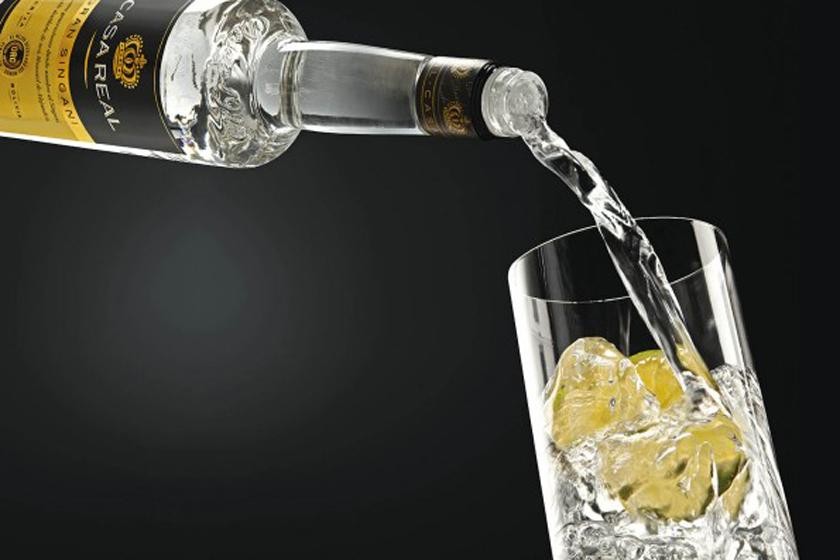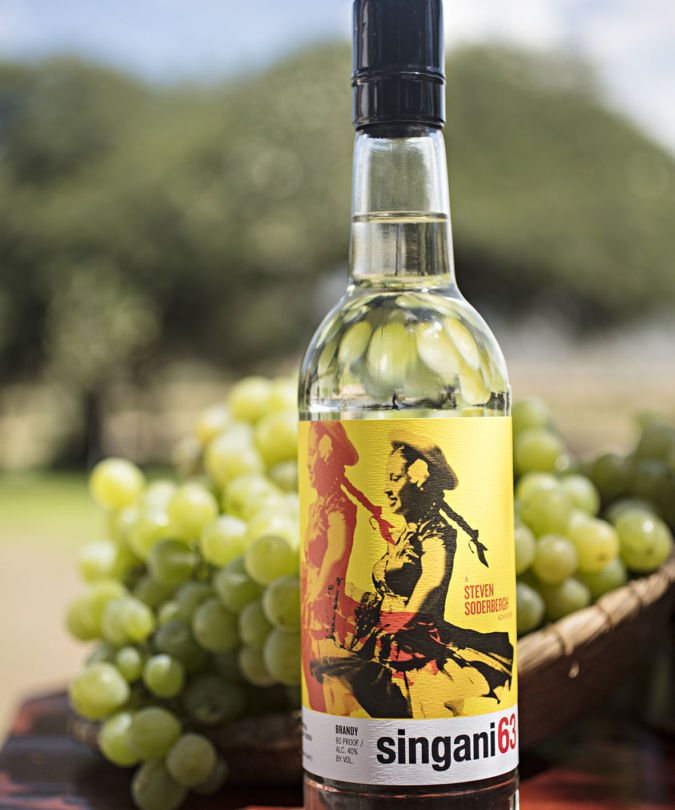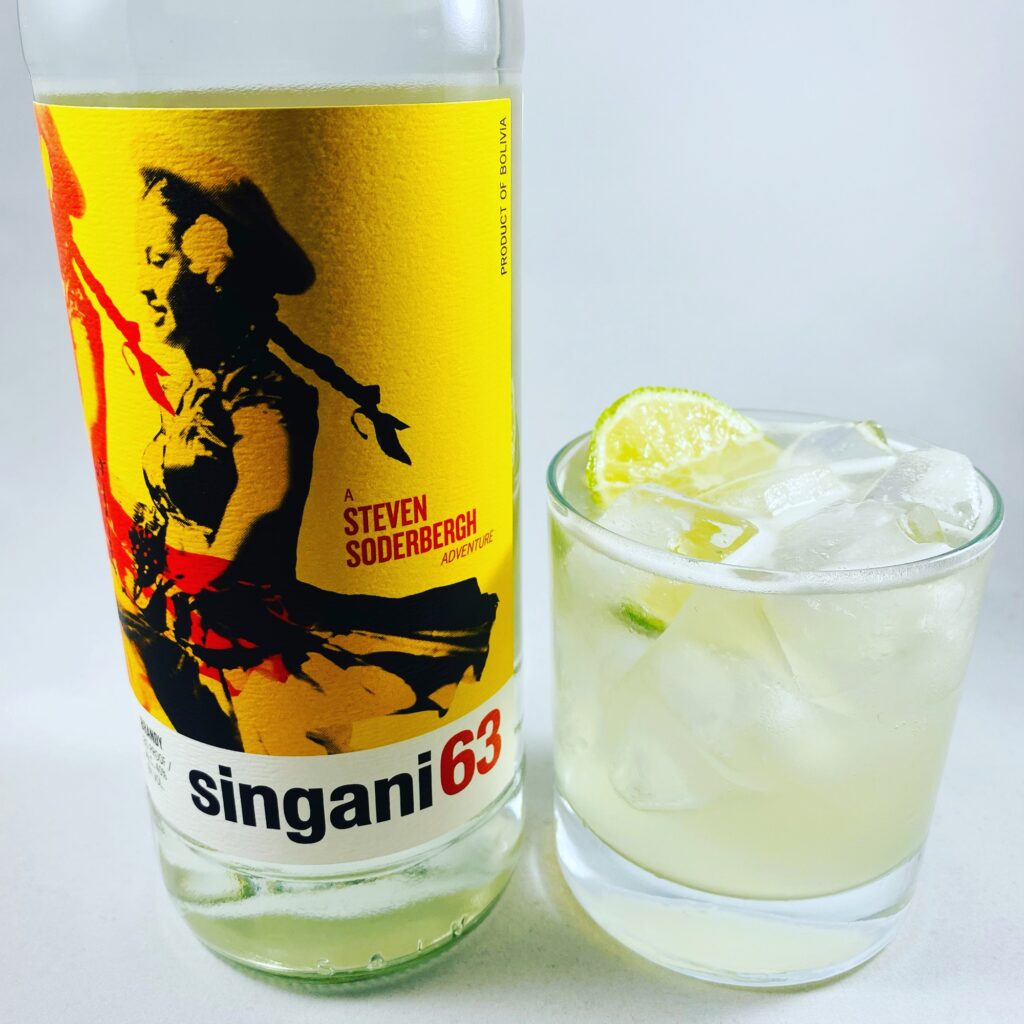
Ever wondered what happens when a grape takes a detour from the vineyard to the cocktail shaker? Or how a sip of liquid sunshine can transport you to the enchanting highlands of Bolivia? Then you're in for a delightful ride. In this blog, we'll dive deep into the realm of Singani. So, here's a complete guide on the drink that's been shaking up both glasses and expectations!
Singani, a special Bolivian eau-de-vie (colorless and clear fruit brandy), is crafted by distilling white Muscat of Alexandria grapes. You can only find these grapes in the high valleys of Bolivia! It proudly holds the title of the nation's beloved distilled spirit and happens to be a big part of their culture.This clear grape spirit has an intriguing production process and a rich history and is worth trying. While it might not have the same global recognition as grappa, brandy, or pisco, this spirit certainly holds its ground. Anyhow, it's officially categorized as a type of brandy in international trade.
What's so intriguing about the history of singani? Well, this unique beverage has its roots deep in the Bolivian Andes, where it has been crafted for centuries. Singani, a beloved part of Bolivian culture, was initially created from grapes by the Incas. Fast forward to the 16th century when Spanish colonists introduced distillation techniques, elevating the spirit's quality.Singani quickly became a hit all over Bolivia, thanks in part to the beloved chuflay cocktail that uses it as a base. Traditionally employed in festivals and celebrations, singani has an important cultural role in Bolivian society. Plus, it's often seen as a symbol of national identity. Singani, unlike its Peruvian counterpart pisco, was a well-kept secret, confined to its native Bolivia until just recently. That's why trying singani is a surprise you shouldn't miss when you're in Bolivia!Also Read: What Is Poitín? A Complete Guide
 Photo credits: winetours-winetasting.comSingani's main component is the Muscat of Alexandria grape, often known as "Moscatel" in the local lingo. These grapes thrive in high-altitude vineyards, which gives Singani its one-of-a-kind flavor. The Tarija region is especially well-known for its expertise in fermenting and cultivating these vines. Crafting Singani involves multiple distillation rounds, and in some cases, a bit of water is added to achieve different quality levels. The distillation process is essential to the character of Singani because it captures the essence of the grapes.After that, singani gets special treatment for aging for a certain period. It's typically between six months and one year, in either French oak or copper barrels. In the world of spirits, singani stands out thanks to the special terroir in which its grapes are cultivated. It falls within the brandy family, boasting an alcohol content of approximately 40% ABV (80° proof).Also Read: A Blue Brew made with Algae!
Photo credits: winetours-winetasting.comSingani's main component is the Muscat of Alexandria grape, often known as "Moscatel" in the local lingo. These grapes thrive in high-altitude vineyards, which gives Singani its one-of-a-kind flavor. The Tarija region is especially well-known for its expertise in fermenting and cultivating these vines. Crafting Singani involves multiple distillation rounds, and in some cases, a bit of water is added to achieve different quality levels. The distillation process is essential to the character of Singani because it captures the essence of the grapes.After that, singani gets special treatment for aging for a certain period. It's typically between six months and one year, in either French oak or copper barrels. In the world of spirits, singani stands out thanks to the special terroir in which its grapes are cultivated. It falls within the brandy family, boasting an alcohol content of approximately 40% ABV (80° proof).Also Read: A Blue Brew made with Algae!
 Photo credits: cluboenologique.comNow that you've got a grasp of what singani is and how it's crafted, let's dive into the fun part – savoring it responsibly. With a little caution and a dash of adventurous spirit, you can truly enjoy this drink!
Photo credits: cluboenologique.comNow that you've got a grasp of what singani is and how it's crafted, let's dive into the fun part – savoring it responsibly. With a little caution and a dash of adventurous spirit, you can truly enjoy this drink!
Bolivians have a knack for sipping singani neat, especially when they're celebrating holidays, birthdays, or simply hanging out with friends. To properly experience the tastes of singani, you could drink it neat or on the rocks in a tulip-shaped glass. This helps you appreciate its complex scent and flavor.
Lately, bartenders have taken a liking to experimenting with singani, treating it much like they would brandy or grappa. Just as you'd whip up a classic Pisco Sour or a Whiskey Sour, give Singani Sour a shot. Alternatively, if you're a vodka enthusiast, consider swapping out your go-to vodka for singani in any of your favorite vodka-based concoctions.If not, you can always whip up a delightful chuflay. Wondering how to make it? Well, here's a classic recipe to kickstart your mixology adventure:Ingredients
How To Make Chuflay
It's a versatile spirit that pairs beautifully with tea and shines in tropical cocktails that flaunt flavors such as banana, ginger, or passionfruit. It's a unique companion in the world of mixology!
Singani goes well with a wide variety of cuisines, from spicy Bolivian recipes to seafood and even sushi. Experiment with food pairings to find your favorites.Also Read: The Best Wine Pairings With Your Favorite TV Shows
Singani is well-known for being fragrant. Its aroma is floral and fruity, with notes of tropical fruits, honey, citrus, and white flowers. Herbal and spicy undertones may also be detected, with a hint of minerality. Singani has a balanced sweetness and dryness on the palate, and the finish is sharp and clean.While it might be easy to mistake them for twins, singani brings its own distinct flavor to the party that sets it apart from other grape brandies. Singani packs a seriously intense and complex flavor punch.It’s all thanks to the high-altitude growing conditions and special production techniques. That's why the best way to savor singani is to keep it simple: with ice and a slice of lime!Also Read: Drinking 101: How To Taste Wine
There are three big players in the singani industry, a handful of medium-sized producers, and plenty of small-scale operations. The top three companies have the capacity to distribute their products throughout Bolivia. The medium-sized suppliers usually focus on specific regions, and the smaller businesses cater to hyper-local markets.Singani 63 by Steven Soderbergh: Once this popular Hollywood director tasted singani, it was like love at first sip - it just clicked with him, and that's when the whole concept for Singani 63 came to life.Rujero: Bodegas y Viñedos de La Concepción, a Bolivian publicly traded company, is known for crafting the popular Rujero brand.Casa Real: Singani Casa Real came to life thanks to an initiative undertaken by Sociedad Agroindustrial del Valle to craft the finest singanis in the valleys of Bolivia’s Tarija. Photo credits: DoctorToboggganAlso Read: A Beginner’s Guide to 8 Popular Wine GrapesConclusionSingani is not just a spirit; it's a piece of Bolivian soul distilled into a bottle. It truly embodies the essence of this unique South American nation. So, the next time you raise a glass of singani, know that you're toasting to the rich culture and invincible spirit of Bolivia. Salud!
Photo credits: DoctorToboggganAlso Read: A Beginner’s Guide to 8 Popular Wine GrapesConclusionSingani is not just a spirit; it's a piece of Bolivian soul distilled into a bottle. It truly embodies the essence of this unique South American nation. So, the next time you raise a glass of singani, know that you're toasting to the rich culture and invincible spirit of Bolivia. Salud!
What Type Of Alcohol Is Singani?Singani falls under the brandy category, and that means it's crafted by distilling wine to create a strong, high-proof spirit.What Are The Ingredients In Singani?Singani, Bolivia's go-to national beverage, is crafted by distilling Muscat of Alexandria grapes from the high valleys of Bolivia.What Does Singani Taste Like?This grape-derived drink has a pleasant, flowery flavor, often with a hint of minerals and a touch of pepper, with a velvety texture.How Strong Is Singani?Singani is essentially a 50-80% ABV, unaged spirit distilled from wine. That makes it a pretty strong spirit!How Do You Drink Singani?The best way to savor singani's true essence is by keeping it simple - just add some ice and a slice of lime.What Do You Mix Singani With?For the ultimate singani experience, pair it up with some ginger ale or a refreshing lemon-lime soda like 7up or Sprite. Don't forget to garnish it with a juicy lime wedge.What Does Singani 63 Taste Like?Singani 63 offers a balanced acidity with hints of white pepper, and mountain meadow blooms. Plus, it has a crisp "green" note, making it taste a bit sweeter than its scent suggests.